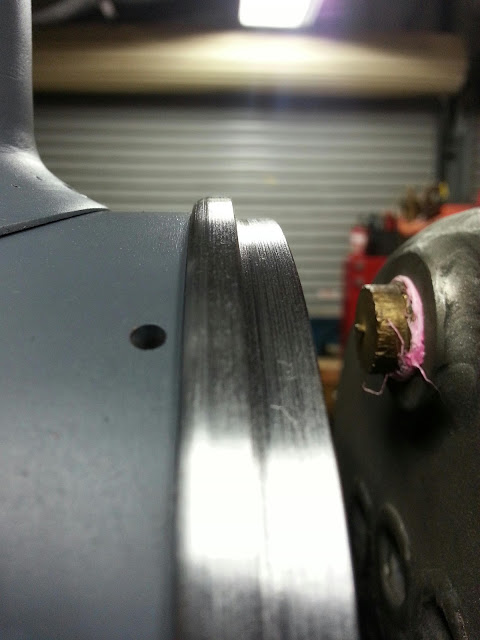The boiler barrel didn't quite fit the smokebox, so the steps and door hinges were removed and the smokebox set up in the lathe to see what's going on.
A quick spin revealed the ring at the back of the smokebox wasn't round, and had become distorted in the brazing of the smokebox, despite being a machined casting. This was given a couple of cleanup skims and now fits the barrel nicely.
Next job to tackle on the boiler after the dome soldering job was checked, is the fitting of the tube nest and inner firebox to the barrel and outer firebox. The tube nest and inner firebox was soldered in a jig so it's dead square.
I found the alignment of the tubes with the tubeplate a potential pest and time waster, these tubes are very easily bent as they are so soft from the annealing by soldering, and they all try and engage the tubeplate at the same time making for some difficulty getting it in.
So a batch of 1/2" brass tube aligners were made and they make it a cinch to do this job. No stress no fuss, just push the tubeplate in and they do all the hard work guiding the tubes in.
The front foundation ring was cut and filed to shape and is used to help set up the firebox in position.
I'm sure everyone has their own way of doing this, but the extra work makes for time saved in the end, especially on multiple boilers!
Happy steaming!
Nigel










































